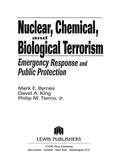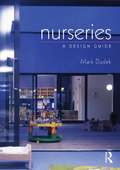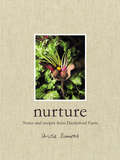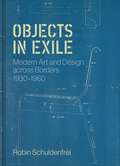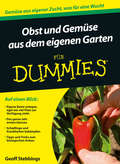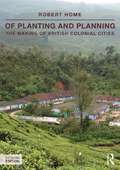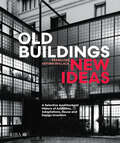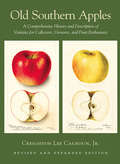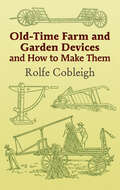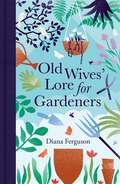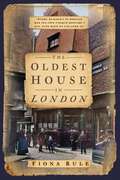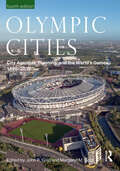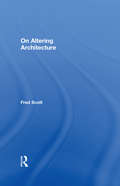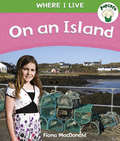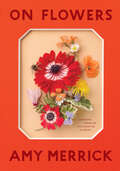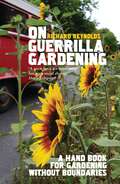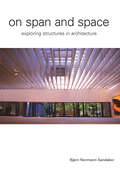- Table View
- List View
Nuclear, Chemical, and Biological Terrorism: Emergency Response and Public Protection
by Mark E. Byrnes David A. King Philip M. Tierno Jr.This book provides guidance on measures that should be considered to protect human lives from terrorist activities involving nuclear, chemical, and biological weapons. It provides a historical summary of the development and use of these weapons, and continues with a detailed discussion of the types of radiation and warfare agents that are available
Nuclear, Chemical, and Biological Terrorism: Emergency Response and Public Protection
by Mark E. Byrnes David A. King Philip M. Tierno Jr.This book provides guidance on measures that should be considered to protect human lives from terrorist activities involving nuclear, chemical, and biological weapons. It provides a historical summary of the development and use of these weapons, and continues with a detailed discussion of the types of radiation and warfare agents that are available
Nurseries: A Design Guide
by Mark DudekArchitecture can inspire young children; the very shape and form of a daycare center can not only stimulate their imagination but can help children form strong relationships and help promote development. This design guide presents all the elements of building design that combine to create the very best environment for young children and the people who work with them, including building materials, multi-functional spaces and design scaled to suit small children.
Nurseries: A Design Guide
by Mark DudekArchitecture can inspire young children; the very shape and form of a daycare center can not only stimulate their imagination but can help children form strong relationships and help promote development. This design guide presents all the elements of building design that combine to create the very best environment for young children and the people who work with them, including building materials, multi-functional spaces and design scaled to suit small children.
Nurture: Notes and Recipes from Daylesford Farm
by Carole BamfordOver 40 years ago, Carole Bamford began a journey towards a more conscious way of life. What began as a desire to make a small difference to the health and future of our planet has grown from a collection of empty barns, bare fields and a small herd of dairy cows, to become Daylesford Organic, one of the most sustainable farms in the UK.Nurture tells the story of how and why it all began and brings to life the principles, ideas and beliefs that have made Daylesford what it is today. From sustainable farming to holistic health, Nurture shares Carole Bamford’s vision for a more mindful way of life and how we can all nourish our bodies, mind and spirit in a simple and balanced way. At the heart of Daylesford is its connection to the land and the book also celebrates the bountiful organic produce it reaps with a selection of seasonal recipes. Packed with flavour and nourishing ingredients, choose from colourful salads and hearty stews, indulgent puddings, meals for special occasions and food for those times when you need an additional boost of nutrients. Nurture is a celebration of the bounty that nature provides, and a reminder that we must all take care of the land we live off, so that future generations can enjoy its riches too.
Objects in Exile: Modern Art and Design across Borders, 1930–1960
by Robin SchuldenfreiAn essential examination of how emigration and resettlement defined modernismIn the fraught years leading up to World War II, many modern artists and architects emigrated from continental Europe to the United States and Britain. The experience of exile infused their modernist ideas with new urgency and forced them to use certain materials in place of others, modify existing works, and reconsider their approach to design itself. In Objects in Exile, Robin Schuldenfrei reveals how the process of migration was crucial to the development of modernism, charting how modern art and architecture was shaped by the need to constantly face—and transcend—the materiality of things.Taking readers from the prewar era to the 1960s, Schuldenfrei explores the objects these émigrés brought with them, what they left behind, and the new works they completed in exile. She argues that modernism could only coalesce with the abandonment of national borders in a process of emigration and resettlement, and brings to life the vibrant postwar period when avant-garde ideas came together and emerged as mainstream modernism. Examining works by Walter Gropius, László Moholy-Nagy, Lucia Moholy, Herbert Bayer, Anni and Josef Albers, and others, Schuldenfrei demonstrates the social impact of art objects produced in exile.Shedding critical light on how the pressures of dislocation irrevocably altered the course of modernism, Objects in Exile shows how artists and designers, forced into exile by circumstances beyond their control, changed in unexpected ways to meet the needs and contexts of an uncertain world.
Objects in Exile: Modern Art and Design across Borders, 1930–1960
by Robin SchuldenfreiAn essential examination of how emigration and resettlement defined modernismIn the fraught years leading up to World War II, many modern artists and architects emigrated from continental Europe to the United States and Britain. The experience of exile infused their modernist ideas with new urgency and forced them to use certain materials in place of others, modify existing works, and reconsider their approach to design itself. In Objects in Exile, Robin Schuldenfrei reveals how the process of migration was crucial to the development of modernism, charting how modern art and architecture was shaped by the need to constantly face—and transcend—the materiality of things.Taking readers from the prewar era to the 1960s, Schuldenfrei explores the objects these émigrés brought with them, what they left behind, and the new works they completed in exile. She argues that modernism could only coalesce with the abandonment of national borders in a process of emigration and resettlement, and brings to life the vibrant postwar period when avant-garde ideas came together and emerged as mainstream modernism. Examining works by Walter Gropius, László Moholy-Nagy, Lucia Moholy, Herbert Bayer, Anni and Josef Albers, and others, Schuldenfrei demonstrates the social impact of art objects produced in exile.Shedding critical light on how the pressures of dislocation irrevocably altered the course of modernism, Objects in Exile shows how artists and designers, forced into exile by circumstances beyond their control, changed in unexpected ways to meet the needs and contexts of an uncertain world.
Obst und Gemüse aus dem eigenen Garten für Dummies (Für Dummies)
by Geoff StebbingsFrisches Obst und Gemüse aus dem eigenen Garten Mal eben in den Garten gehen und ein paar Beeren naschen, die selbst angebauten Bohnen ernten oder Zwetschgenkuchen mit Früchten vom eigenen Baum backen − gefällt Ihnen die Vorstellung? Dieses praktische Handbuch gibt Ihnen zahlreiche Tipps und Tricks, wie Sie das ganze Jahr lang leckeres, ernte - frisches Obst und Gemüse aus dem eigenen Garten genießen können: von der Wahl des Werkzeugs über die Auswahl der Pflanzen und Tipps zum biologischen Anbau bis zur ersten Ernte. Geoff Stebbings gibt Ihnen nützliche Ratschläge an die Hand, damit Sie sofort mit der eigenen Gartenarbeit beginnen können und in kurzer Zeit ein erfolgreicher Hobbygärtner werden.
Of Planting and Planning: The making of British colonial cities (Planning, History and Environment Series)
by Robert Home‘At the centre of the world-economy, one always finds an exceptional state, strong, aggressive and privileged, dynamic, simultaneously feared and admired.’ - Fernand Braudel, Civilization and Capitalism, 15th–18th Centuries This, surely, is an apt description of the British Empire at its zenith. Of Planting and Planning explores how Britain used the formation of towns and cities as an instrument of colonial expansion and control throughout the Empire. Beginning with the seventeenth-century plantation of Ulster and ending with decolonization after the Second World War, Robert Home reveals how the British Empire gave rise to many of the biggest cities in the world and how colonial policy and planning had a profound impact on the form and functioning of those cities. This second edition retains the thematic, chronological and interdisciplinary approach of the first, each chapter identifying a key element of colonial town planning. New material and illustrations have been added, incorporating the author's further research since the first edition. Most importantly, Of Planting and Planning remains the only book to cover the whole sweep of British colonial urbanism.
Of Planting and Planning: The making of British colonial cities (Planning, History and Environment Series)
by Robert Home‘At the centre of the world-economy, one always finds an exceptional state, strong, aggressive and privileged, dynamic, simultaneously feared and admired.’ - Fernand Braudel, Civilization and Capitalism, 15th–18th Centuries This, surely, is an apt description of the British Empire at its zenith. Of Planting and Planning explores how Britain used the formation of towns and cities as an instrument of colonial expansion and control throughout the Empire. Beginning with the seventeenth-century plantation of Ulster and ending with decolonization after the Second World War, Robert Home reveals how the British Empire gave rise to many of the biggest cities in the world and how colonial policy and planning had a profound impact on the form and functioning of those cities. This second edition retains the thematic, chronological and interdisciplinary approach of the first, each chapter identifying a key element of colonial town planning. New material and illustrations have been added, incorporating the author's further research since the first edition. Most importantly, Of Planting and Planning remains the only book to cover the whole sweep of British colonial urbanism.
Öffentliche Kunst, Kunst im öffentlichen Raum Niederösterreich, Band 8: / Public Art Lower Austria, Volume 8 (Veröffentlichte Kunst. Kunst im öffentlichen Raum Niederösterreich Public Art Lower Austria #8)
Kunst im öffentlichen Raum in Niederösterreich ist ein einzigartiges Modell, das international höchste Anerkennung findet. Die im ländlichen und kleinstädtischen Raum entstandenen Projekte bedeutender, aber auch junger unbekannter KünstlerInnen setzen sich mit der Landschaft, der Kulturgeschichte und der Architektur auseinander oder entstanden auf der Basis von sozialer und wissenschaftlicher Recherche. Der vorliegende Band dokumentiert die Projekte der Jahre 2004 – 2006. Neben der Projektdokumentation äußern sich Experten unterschiedlichster Bereiche in einer kunstwissenschaftlichen und theoretischen Diskussion zur "Gestaltung von Kreisverkehren", ein Thema brisanter Aktualität in der Gestaltung von Landschaft und Umgebung.
Old Buildings, New Ideas: A Selective Architectural History of Additions, Adaptations, Reuse and Design Invention
by Françoise Astorg BollackSome architectural transformations are modest, some are revolutionary. Shining a light on the hidden side of the accepted narrative of the history of architecture, this book explores works which transform existing buildings to build a way forward, through adaptations, additions and visual shifts. Examining 30 buildings across Europe, North America and South America, spanning from the early Middle Ages to the end of the 20th century, it demonstrates the creative possibilities of working with existing buildings. The book reveals how formal inventions can shape architecture and our environment over time in a built world constantly in a state of becoming. As we face a climate emergency, it taps into our deep cultural knowledge about the inventive use and re-use of buildings. Generously illustrated with architectural plans and over 300 colour images, it provides an alternative to the dominant view which sees conservation and preservation of historic buildings as a 20th century creation.
Old Buildings, New Ideas: A Selective Architectural History of Additions, Adaptations, Reuse and Design Invention
by Françoise Astorg BollackSome architectural transformations are modest, some are revolutionary. Shining a light on the hidden side of the accepted narrative of the history of architecture, this book explores works which transform existing buildings to build a way forward, through adaptations, additions and visual shifts. Examining 30 buildings across Europe, North America and South America, spanning from the early Middle Ages to the end of the 20th century, it demonstrates the creative possibilities of working with existing buildings. The book reveals how formal inventions can shape architecture and our environment over time in a built world constantly in a state of becoming. As we face a climate emergency, it taps into our deep cultural knowledge about the inventive use and re-use of buildings. Generously illustrated with architectural plans and over 300 colour images, it provides an alternative to the dominant view which sees conservation and preservation of historic buildings as a 20th century creation.
Old Southern Apples: A Comprehensive History and Description of Varieties for Collectors, Growers, and Fruit Enthusiasts, 2nd Edition
by Creighton Lee CalhounA book that became an instant classic when it first appeared in 1995, Old Southern Apples is an indispensable reference for fruit lovers everywhere, especially those who live in the southern United States. Out of print for several years, this newly revised and expanded edition now features descriptions of some 1,800 apple varieties that either originated in the South or were widely grown there before 1928. Author Lee Calhoun is one of the foremost figures in apple conservation in America. This masterwork reflects his knowledge and personal experience over more than thirty years, as he sought out and grew hundreds of classic apples, including both legendary varieties (like Nickajack and Magnum Bonum) and little-known ones (like Buff and Cullasaga). Representing our common orchard heritage, many of these apples are today at risk of disappearing from our national table. Illustrated with more than 120 color images of classic apples from the National Agricultural Library’s collection of watercolor paintings, Old Southern Apples is a fascinating and beautiful reference and gift book. In addition to A-to-Z descriptions of apple varieties, both extant and extinct, Calhoun provides a brief history of apple culture in the South, and includes practical information on growing apples and on their traditional uses.
Old-Time Farm and Garden Devices and How to Make Them
by Rolfe CobleighA splendid bit of rural Americana, Cobleigh's book shows how anyone with a little time and money can add a touch of authentic charm to their farm, house, or garden. First published nearly a century ago, this practical guide features dozens of projects, accompanied by some 200 illustrations. A simply written text not only tells how to mount an anvil, make a cheese press, and build hog houses, but also provides handy advice on splitting wood, testing seed corn, tying practical knots, sharpening scissors, and papering a room.From building a rose trellis to creating a bicycle-powered washing machine, readers will delight in this book’s abundance of enjoyable and useful projects. It’s perfect for novice craftworkers and die-hard fans of Yankee ingenuity.
Old Wives' Lore for Gardeners
by Diana FergusonPacked full of the age-old wisdom and expertise of generations of gardeners, who used their down-to-earth and practical experience to create beautiful, productive and useful gardens without spending a fortune.Behind every beautiful garden is the skill and experience of the gardener who tends it. How do you know which plants will thrive in your patch, given the bewildering array on offer? How do you know what soil and location they will like? And what do you do about all those pests just waiting to tuck in, not to mention the fungal diseases that suddenly turn your rose leaves from glossy green to blotchy yellow and coat other leaves with a powdery white dust? Just how do you tackle these gardening challenges, while being eco friendly at the same time? This is where Old Wives’ Lore for Gardeners comes in. Packed within its pages is all the age-old wisdom of generations of gardeners, people who knew a thing or two about plants. They lived before the days of chemical pesticides and concocted kitchen-cupboard remedies to treat pests and diseases. They gardened organically – although they wouldn’t have called it that – because there was no other choice on offer. With a wealth of savvy and cost-effective tips and advice, intriguing facts, snippets of history and quotes, Old Wives’ Lore for Gardeners is not only a fascinating read but also an invaluable guide to the gardening practices of old, which are as relevant today as they have ever been.
The Oldest House in London: London Through The Eyes Of Its Oldest House
by Fiona RuleLondon's old buildings hold a wealth of clues to the city’s rich and vibrant past. The histories of some, such as the Tower of London and Westminster Abbey, are well documented. However, these magnificent, world-renowned attractions are not the only places with fascinating tales to tell. Down a narrow, medieval lane on the outskirts of Smithfield stands 41–42 Cloth Fair – the oldest house in the City of London. Fiona Rule uncovers the fascinating survival story of this extraordinary property and the people who owned it and lived in it, set against the backdrop of an ever-changing city that has prevailed over war, disease, fire and economic crises.
Olympic Cities: City Agendas, Planning, and the World’s Games, 1896 – 2032 (ISSN)
by John R. Gold Margaret M. GoldThe first edition of Olympic Cities, published in 2007, provided a pioneering overview of the changing relationship between cities and the modern Olympic Games. This substantially revised and much enlarged fourth edition builds on the success of its predecessors. The first of its three parts provides overviews of the urban legacy of the four component Olympic festivals: the Summer Games; Winter Games; Cultural Olympiads; and the Paralympics. The second part comprises systematic surveys of six key aspects of activity involved in staging the Olympics and Paralympics: finance; sustainability; the creation of Olympic Villages; security; urban regeneration; and tourism. The final part consists of ten chronologically arranged portraits of host cities from 1960 to 2032, with complete coverage of the Summer Games of the twenty-first century.As controversy over the growing size and expense of the Olympics, with associated issues of democratic accountability and legacy, continues unabated, this book’s incisive and timely assessment of the Games’ development and the complex agendas that host cities attach to the event will be essential reading for a wide audience. This will include not just urban and sports historians, urban geographers, event managers, and city planners, but also anyone with an interest in the staging of mega-events and concerned with building a better understanding of the relationship between cities, sport, and culture.
Olympic Cities: City Agendas, Planning, and the World’s Games, 1896 – 2032 (ISSN)
The first edition of Olympic Cities, published in 2007, provided a pioneering overview of the changing relationship between cities and the modern Olympic Games. This substantially revised and much enlarged fourth edition builds on the success of its predecessors. The first of its three parts provides overviews of the urban legacy of the four component Olympic festivals: the Summer Games; Winter Games; Cultural Olympiads; and the Paralympics. The second part comprises systematic surveys of six key aspects of activity involved in staging the Olympics and Paralympics: finance; sustainability; the creation of Olympic Villages; security; urban regeneration; and tourism. The final part consists of ten chronologically arranged portraits of host cities from 1960 to 2032, with complete coverage of the Summer Games of the twenty-first century.As controversy over the growing size and expense of the Olympics, with associated issues of democratic accountability and legacy, continues unabated, this book’s incisive and timely assessment of the Games’ development and the complex agendas that host cities attach to the event will be essential reading for a wide audience. This will include not just urban and sports historians, urban geographers, event managers, and city planners, but also anyone with an interest in the staging of mega-events and concerned with building a better understanding of the relationship between cities, sport, and culture.
On Altering Architecture
by Fred ScottBringing together interior design and architectural theory, this exciting text looks at the common practices of building alteration, reconsidering established ideas and methods, to initiate the creation of a theory of the interior or interventional design. Fred Scott examines in-depth case studies of interventional design from architectural history across the world – examples discussed are taken from the States, Europe and Japan. Scott expands and builds on the ideas of Viollet-le-Duc, structuralism and other thoughts to layout criteria for an art of intervention and change. The book draws on the philosophy of conservation, preservation and restoration, as well as exploring related social and political issues. For those in professions of architecture and interiors, town planners, and students in architecture and art schools, On Altering Architecture forms a body of thought that can be aligned and compared with architectural theory.
On Altering Architecture
by Fred ScottBringing together interior design and architectural theory, this exciting text looks at the common practices of building alteration, reconsidering established ideas and methods, to initiate the creation of a theory of the interior or interventional design. Fred Scott examines in-depth case studies of interventional design from architectural history across the world – examples discussed are taken from the States, Europe and Japan. Scott expands and builds on the ideas of Viollet-le-Duc, structuralism and other thoughts to layout criteria for an art of intervention and change. The book draws on the philosophy of conservation, preservation and restoration, as well as exploring related social and political issues. For those in professions of architecture and interiors, town planners, and students in architecture and art schools, On Altering Architecture forms a body of thought that can be aligned and compared with architectural theory.
On an Island (Popcorn: Where I Live)
by Fiona MacdonaldFind out what it's like to live on the Isle of Coll, also recognised as the Isle of Struay in Katie Morag's books. Meet Lexi to find out what school is like on the island, see how people travel around what jobs people do there, what people do in their leisure time, what wildlife there is on island and how people shop.
On Flowers: Lessons from an Accidental Florist
by Amy MerrickA one-of-a-kind journey into the mind of beloved floral designer Amy Merrick, celebrating the beauty and possibilities of nature and how to use it to create elegant, ephemeral arrangements.
On Guerrilla Gardening: A Handbook for Gardening without Boundaries
by Richard ReynoldsOn Guerrilla Gardening is an activist's call to arms to all citizens - green-fingered, green-thinking or curious - to join the revolution of guerrilla gardening: transforming public space into oases of colour and life. The enemy: neglect, apathy and the disintegration of community spirit. The arsenal: daring, a packet of seeds and a passionate commitment to social change. When Richard Reynolds first embarked on guerrilla gardening, growing flowers by moonlight outside his tower block, he had no idea it was part of a growing global movement committed to cultivating the potential in the land regardless of all obstacles. Charting the battles fought across thirty different countries and the revolutionary history of this subculture, On Guerrilla Gardening is an inspirational take on gardening in the 21st century.
On Span and Space: Exploring Structures in Architecture
by Bjorn N. SandakerIn this richly illustrated book with many practical examples, Bjorn Sandaker provides readers with a better understanding of the relationship between technology and architecture. As an experienced teacher and writer, Sandaker offers a well-founded aesthetic theory to support the understanding and evaluation of a structure's form and design, examining concepts and viewpoints from both the professions of engineering and architecture. Comprehensively covering structure and aesthetics, this book is ideal for students, professionals and academics in the areas of architecture and building.
